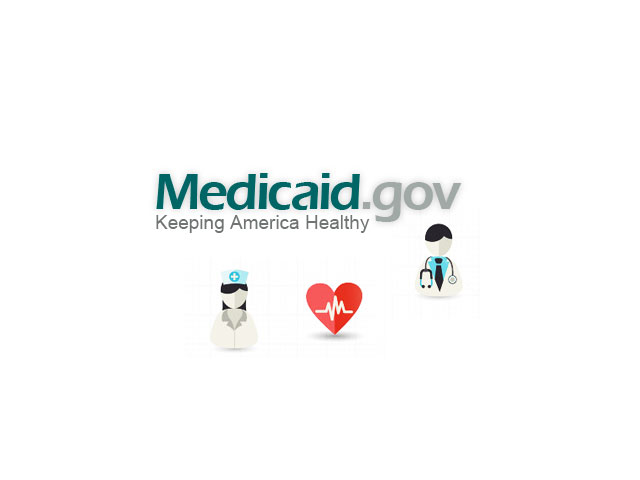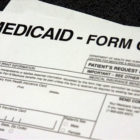Medicaid.Gov Website Overview

As of this writing, you cannot apply for Medicaid online at the Medicaid.gov site. You can use the site to learn up-to-date information about Medicaid and CHIP (Children’s Health Insurance Program. You must contact your state’s Medicaid Office to apply for Medicaid. You can find the contact information for your state’s Medicaid office at https://www.medicaid.gov/about-us/contact-us/contact-state-page.html. For instance, if you live in the state of Massachusetts, your local Office of Medicaid is 1-617-573-1770.
If you applied for Medicaid in the past but didn’t qualify, don’t give up. Because some states’ Medicaid expansion covers more people, you might qualify for low-cost or free medical and dental services through Medicaid. Your family size and the amount of income you earn are some of the factors your state Medicaid agency considers. https://www.medicaid.gov/medicaid/program-information/medicaid-and-chip-eligibility-levels/index.html
How Many People Are Enrolled in Medicaid and CHIP?
According to Medicaid.gov, more than 71 million people are enrolled in Medicaid and CHIP as of September 2017. About 68 million are Medicaid beneficiaries and about 6 million are CHIP beneficiaries:
- Sixteen million additional beneficiaries are enrolled in Medicaid and CHIP benefits (September 2017 vs. September 2013).
- Child beneficiaries of the Medicaid program and beneficiaries enrolled in CHIP account for about half of Medicaid/CHIP programs’ total enrollment.
- The number of beneficiaries receiving Medicaid and CHIP changes from month to month. About 144,000 more beneficiaries were enrolled in August 2017 vs. September 2017.
How Does Medicaid Work?
State Medicaid programs are required to adhere to federal guidelines. Costs and coverage may differ between the states.
Medicaid programs may pay for the beneficiary’s care directly. Some beneficiaries have zero out-of-pocket costs for their medical and dental care.
Other Medicaid programs work with private insurers to provide coverage to beneficiaries.
What Income Level Must I Have to Qualify for Medicaid?
The answer to this question is—it depends on where you live.
If your residential state expanded Medicaid during the Obama administration, you may qualify for Medicaid based on your income. https://www.healthcare.gov/lower-costs/
If your Medicaid Office didn’t expand its program, existing rules are used to determine your eligibility. Your family status—e.g. caring for a young child/children or pregnancy, annual income, family/household size, age, disability, and other criteria are considered.
Each family’s needs and situation differ. Complete a Medicaid application to learn if you qualify.
How Do I Submit a Medicaid Application?
Your state’s Medicaid Office will ask you to verify your identity and your financial circumstances. Gather as least one document from each category to prepare for your meeting with Medicaid for #1-4:
#1: Proof of Your Age
Bring your U.S. passport, birth certificate (certified copy), driver’s license, or baptismal certificate.
#2: Proof of U.S. Citizenship
Provide your U.S. passport, final adoption decree, birth certificate (certified copy), alien registration card (green card), or naturalization papers.
#3: Your Identity
Provide your U.S. passport, photo identification or government-issued license, school ID, or U.S. military identification card.
#4: Your Marital Status
Bring your marriage certificate, spouse’s certificate of death, separation agreement, or divorce decree.
Provide all relevant documents for the following categories:
#5: Financial Documents and Resources
Provide checking and savings account statements, annuities, money market accounts, property deeds (listing agreement), Certificates of Deposit (CDs), retirement accounts (e.g. IRAs, 401k, 403B, etc.), motor vehicle title/value (bring loan paperwork if you’re paying for a motor vehicle), mortgage loan, stock or bond accounts, property proceeds, HUD-1, prepaid funeral contract, burial plot details, life insurance policies (cash value statement), or special needs trusts.
#6: Earnings and Income
Bring pay stubs (the past one-two months), SSI award letter, Social Security award letter, pension statement, Veterans’ Administration award letter, unemployment weekly pay stubs, or Railroad Retirement award letter.
#7: Cost of Living
Bring copies of income verifications (as per above), home owner’s or renter’s insurance, spouse’s identification, water or sewer bills, electric bills, rental receipts, real estate taxes paid, gas or oil bills, or mortgage loan statements.
#8: Other Important Information
Provide copies of your Social Security card (front/back), Original Medicare card (front/back), Medicare Advantage card (front/back), other insurance cards, prescription medicine cards, insurance premium statements or payment coupon books, or guardianship documents.



